Drawing vs Painting: Which one is harder, and why? If you asked that question to a dozen artists, you'd probably get a dozen different answers. That's because there's no clear answer. Even those that purport to have the answer will admit there are a lot of factors that influence that answer.
In this article, I will outline how drawing and painting differ. Starting with a definition of drawing and painting.
- Definition Of Drawing and Painting.
- What Is The Relevance of Drawing and Painting?
- Why Draw Before You Begin To Paint.
- Do You Have To Be Good and Drawing To Be Able To Paint?
- Things That Are Harder To Paint and Draw.
- Which Is The Hardest Painting Style and Why?
- Which Is The Hardest Drawing Style and Why?
What style of art are we talking about here? Individual art styles are easier to accomplish using a pencil, charcoal, or other dry media.
Conversely, different types of art are much easier to do using paint.
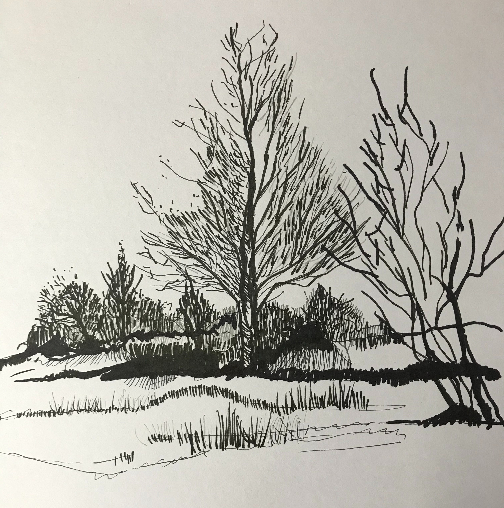
Then, of course, you have to consider the fact that many types of art done using a drawing material, like soft pastels, are considered by many to be paintings. Making matters even more complicated is that liquid ink can be used to create artwork deemed to be a drawing!
It can all be quite confusing. The good news is that by learning everything about drawing and painting, you can gain a much broader understanding of art in general.
The bottom line here is that it really doesn't matter if someone thinks drawing is more challenging than painting or vice versa. What matters is that you explore using techniques that you enjoy employing. You work on drawing, painting, or creating a hybrid of the two to create something different.
There is a certain mystique to being a painter that many people equate with being a so-called higher form of art. Anyone can pick up a pencil and draw something, but not everyone can paint, right? Wrong.
Any untrained and untalented person can draw or paint. It just won't be terrific. So, don't get caught up in the notion that being a painter makes you a better artist than you would be if you worked in dry media. Do what makes you happy, and forget about what is considered harder.
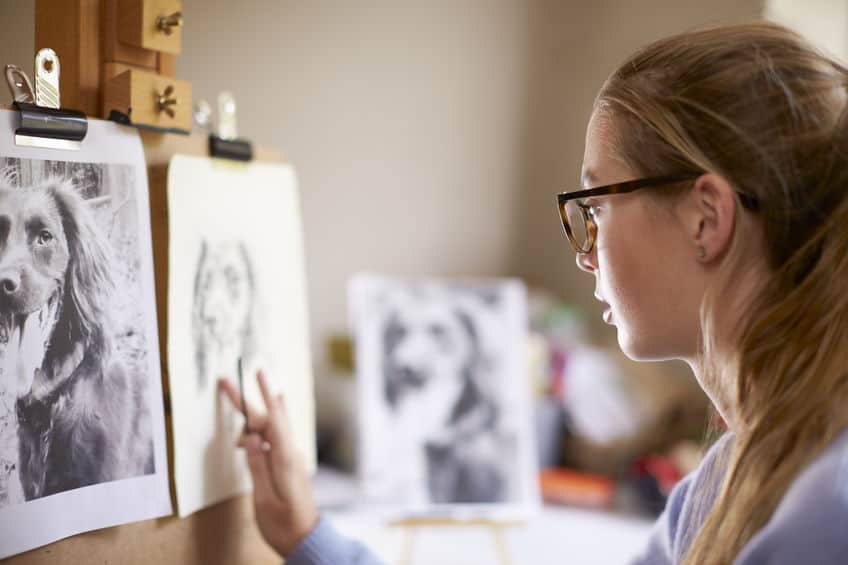
How Is Drawing Different From Painting?
Painting vs. drawing: Which one is harder, and why? If you insist on trying to answer that question, then you should start out by learning as much as you can about each art form.
Once you understand the principles behind them and have practiced both, you'll probably have a better understanding of which one you think is more challenging.
You'll possibly develop one that you are more proficient in than the other, but that doesn't mean everyone will feel the same way. It really boils down to it being a personal preference on your part.
Is Drawing Harder Than Painting?
How do drawing and painting differ? A drawing usually involves creating lines and shapes using a pencil. Or charcoal. Or pen and ink.
Drawings are often executed in a single color, but it's not uncommon for colored pencil drawings to utilize various colors. Drawing focuses typically on lines and different values.
Drawing focuses typically on lines and different values.
Painting, on the other hand, typically focuses on color and form.
Painting, on the other hand, typically focuses on color and form. There are monochromatic paintings, so this definition is far from an exact science. Paintings don't usually utilize lines; instead, they use color and value to create shapes.
But, you can paint lines, if that's what you prefer.

But, you can paint lines, if that's what you prefer. It's hard to define precisely what is a painting and what is a drawing because there is a substantial amount of overlap between the two. That, right there, should show you just how hard it is to choose whether drawing or painting is more complicated.
Confused yet? This is all about art, and art is about breaking the rules. You can paint with dry media or create drawings with wet media. It's all about creating something unique and original, so don't worry about labeling something like a drawing or painting. Instead, focus on the creative process and creating something you can be proud of.
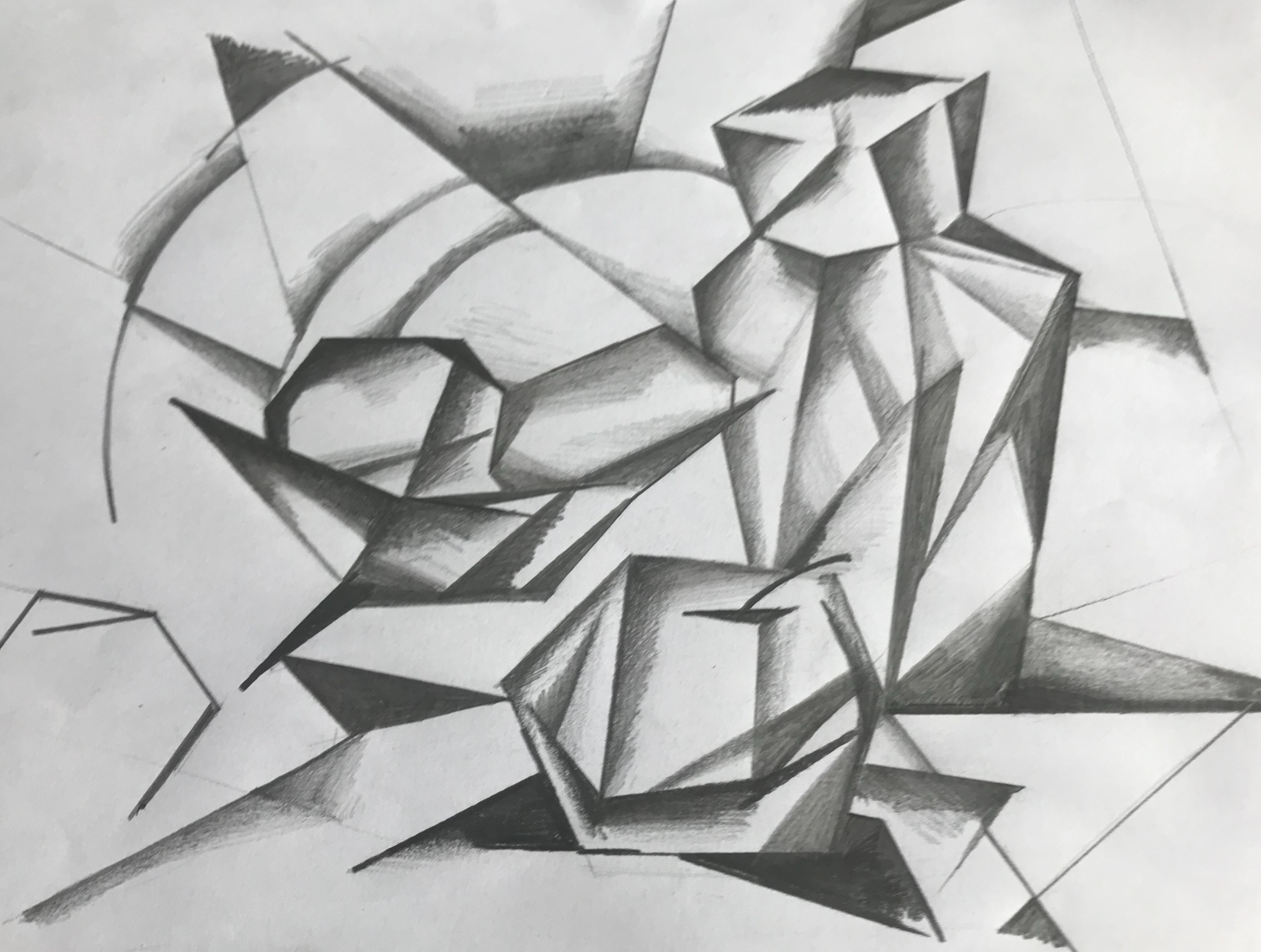
Definition Of Drawing And Painting
Drawing is defined as using lines to create a design, often imitating a place or thing. Painting is defined as using paint, or another medium, to create colors and values to produce artwork.
The main point here should be that both approaches have the same intended result to create art. Drawing focuses on lines and shading, and painting focuses on forms and color.
What Is The Relevance Of Drawing And Painting?
Why are drawing and painting relevant? They are relevant because they allow an artist the ability to express themselves and the ability to share that expression with the rest of the world.
If you want a picture of someone or something, you can take a photo. With just about everyone carrying a smartphone with a camera on it, it's easier to take a photo.
While a photo can be considered art, it's not the same as a drawing or painting.
When an artist draws or paints something, they aren't constrained by what they see in front of them.
When you draw or paint something, you can try to recreate what you see before you, or you can create something that has never been seen before.
Drawing and painting are relevant because they are a creative outlet for artists, and for viewers of art, they offer a chance to see something totally unique from someone else's perspective.
Why Draw Before You Begin To Paint?
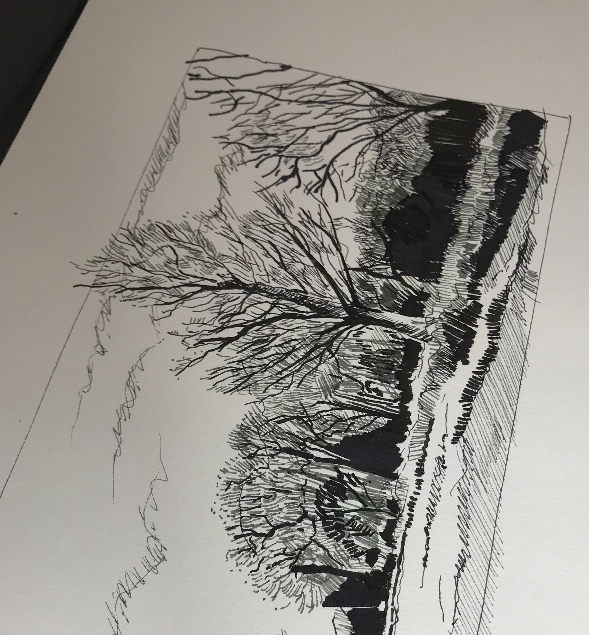
Should you draw before you paint? That depends on what you mean by the question. As a general rule of thumb, in the art world, you should have a solid foundation in drawing before you start trying to paint. Painting is another dimension to artwork, so why would you want to do that before mastering drawing? Remember, draw well first, then paint.
If you mean should you draw on your canvas or paper before you paint on it, that's a matter of preference. Do you want a guide to working off? Then draw that guide. Do you prefer a more spontaneous approach? Then, don't draw first.
One thing to remember is that if you are drawing before you paint, you need to choose what you do your underdrawing with carefully. Pencil can work, but it can also cause problems. This is especially true when painting with oils.
With oil painting, graphite can seep through the layers of paint and make it to the surface of a picture, ruining it. So, use ink or charcoal with some spray fixative for oil painting.
Do You Have To Be Good At Drawing To Be Able To Paint?
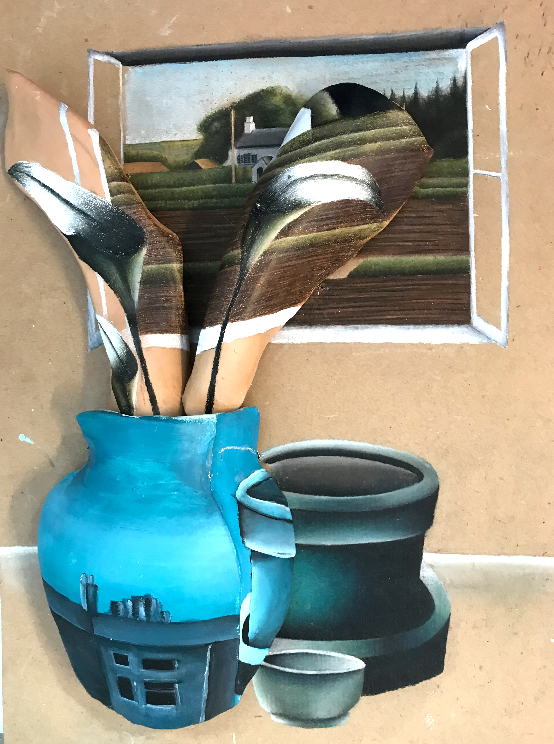
Do you have to be good at drawing to be able to paint? That's a bit of a loaded question. It really does depend on what type of art you want to create.
Are you an abstract artist? Then you really don't need to be able to draw well to successfully paint a picture. Now, this doesn't mean that abstract art is easy to create.
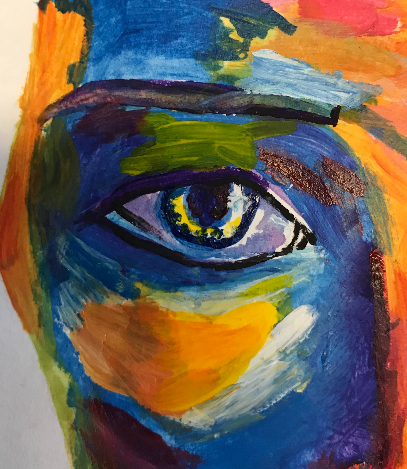
Any abstract artist reading this was probably jumping up and down right there, thinking this was a shot at abstract art. It's not. Abstract art takes natural talent and passion for doing well, so no, it is not easier than painting something in a realistic style.
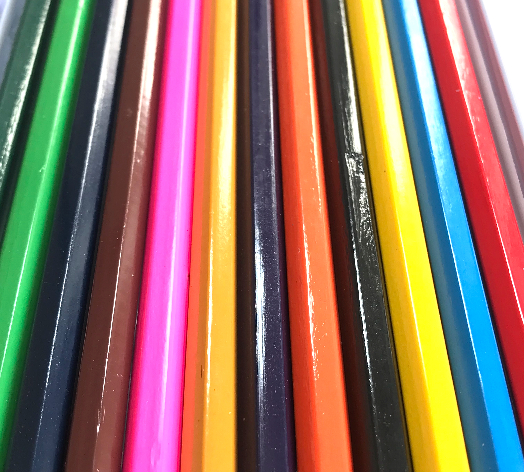
Abstract art is often created more quickly and with less planning than realistic art. While it may not require the same level of draftsmanship or technical ability as realistic art, it has challenges that have to be overcome.
You can't just grab some tubes of paint and start painting random strokes in the hope of creating a masterpiece. There needs to be thought behind each color, stroke, and form you create in an abstract painting.
With abstract painting, your goal as an artist should be to convey an emotion. You want the person looking at your art to feel something. For just a moment, at least, you want them to see things from your perspective.

So, if you think that abstract painting is easy, you couldn't be more wrong. Does it take the same level of technical skill as creating realistic art? No, but it does require an ability to understand color and form and think and plan at a high level.
Now, if you want to be able to paint realistically, you absolutely need to draw well first. How can you expect to paint, in color, with a medium that is more difficult to control unless you can draw well first? You can't.
All realistic art should have a foundation in drawing. You need to master your subject matter with a simple pencil before you progress to painting. Maybe you'll decide that you don't need to progress to painting and that drawing is the ideal approach for your artwork?
Things That Are Harder To Paint Than To Draw
What types of things are harder to paint than to draw? That's a question that is likely to elicit many different answers depending on who you ask. It all comes down to your strengths and weaknesses.
If you are great at drawing people, painting people will likely come more naturally to you.
Generally speaking, though, painting anything highly detailed is more complicated than realistic drawings. For example, if you are painting a city skyline, painting straight edges and evenly spaced windows will be much harder than drawing it.
Which Is The Hardest Painting Style And Why?
What is the most challenging painting style? Depending on the artist, a portrait painted in oils would be at or near the top of the list. Why?
Painting with oil requires more technical skill than painting with other types of paint, and it also requires a lot of patience.
Oils can take weeks to dry enough to paint a second layer of paint, which means you have two options. You can be patient and wait a long time between painting layers.
Or, you can paint all prima, painting everything in one layer. In either case, you are looking at a lot of hard work.
While painting anything is challenging, painting realistic portraits is probably the most challenging application of this medium. Why is that? There are several reasons.
First, painting realistic flesh tones is very difficult to do. Human skin is made of multiple layers, with the color of each layer influencing what the layer above it looks like.
The other reason it's hard to paint realistic portraits is that the human face is the most familiar thing in the world to everyone.
If you are painting a landscape and make a mistake on a tree, it may be overlooked. But if you are painting a portrait and something is off, it will be blatantly obvious to everyone who sees it.
If you want to see how difficult the question of drawing vs. painting being more difficult is, you can look at a subset of paintings.
Oil Painting
What's a harder oil painting, watercolor painting, or acrylic painting? Oils take forever to dry, so it must be them, right? Watercolor flows around the paper and is difficult to control, so it must be that, right?
Acrylic paint dries so quickly that proper blending is nearly impossible.
So, which painting process is the hardest? All have their challenges and things that they lend themselves to.
If you can't even agree on which painting method is the most difficult, how could you possibly hope to agree about painting or drawing being more demanding?
Which Is The Hardest Drawing Style And Why?
What is the hardest drawing style? Much like asking about the most intricate painting style, that will depend on your personal strengths. Two things are probably the most difficult to draw from a technical standpoint. The first is highly detailed drawings that feature inorganic, mechanical shapes.
Drawing something like a building is very difficult because you have to draw precision. You can have crooked lines (when drawing realistically, at least), and all angles and proportions have to be right on.
The other challenging thing to draw well is a realistic human face. This is the same reason that painting a human face and a human figure is very difficult. You can't make any mistakes. If you have anything off, then your drawing will show it. When trying to get an accurate likeness of a person, getting every feature right is incredibly important.
This way, all human faces have the same basic features. Two eyes, a nose, a mouth, cheeks, a forehead, a chin, and ears. The size, shape, and relation to one another with these elements make us all unique.
So, when you are trying to create a drawing that looks like a real person, you need to get everything just right.
One approach to this problem is to use the grid method. What's the grid method? It's simple, really. Take your reference photo, then draw a grid of evenly spaced lines.
Make sure you use a ruler. The lines need to be perfectly straight and equal distance apart for this to work. Get your paper and lightly draw in the same grid, scaled for size.
For example, if your drawing is going to be twice the size of your picture, then scale the grid up by a factor of two.
Now, when you are drawing, you'll be able to see where every feature falls on your photo, then quickly compare it to your drawing. If they don't line up perfectly, you've made a mistake. Sure, erasing your mistake is a pain, but it's better than having a drawing that doesn't meet your standards.
The grid method is a time-honored tradition that artists have employed for years to accurately draw a portrait.
If you wonder about a specific type of drawing that is particularly difficult, then using ink is always a challenge.
Ink is permanent. Ink is also spectacular when done right. If you want to challenge yourself as an artist, doing a pen and ink drawing will do that. You will not be able to undo mistakes, but you'll also be forced to use hatching and other techniques to indicate shadows.
Final Thoughts
Which one is harder, and why? Here we are, back where we started. The answer here is actually straightforward. There is no answer. No type of art is harder than others.
Painting, drawing, and every style and medium require different pull-off skills. That doesn't mean that separate art forms are harder than something else. It just means that it is different.
Many people consider painting to be more difficult than drawing because most artists learn to draw first. You don't show up to your first day of art school and have an oils painting set handed to you. No, you are given a pencil or maybe crayons.
You start out drawing, making it seem only natural that painting is a more advanced technique. If most artists started painting first, the general consensus would probably be that drawing is more challenging.
The point here is that it's all about the mindset that develops from a young age. It's a stereotype, that's all.
If you really want to answer this impossible question, you need to find it yourself. You can't go online and read what anyone else says. You can't listen to a teacher explain it to you. You need to experience it yourself. You need to experience it yourself because the answer is different for everyone.
Create Art With My Favourite Drawing Resources
General Drawing Courses. I like Udemy if you want to develop your knowledge of drawing techniques. Udemy is an excellent choice due to its wide range of creative courses and excellent refund policy. They often have monthly discounts for new customers, which you can check here. Use my link.
Sketching and Collage. Take a look at this sketching resource I have created. Use this link.
Proko. Is one of my favorite teachers who surpasses in the teaching of Anatomy and Figure drawing. Prokos course breaks down the drawing of the human body into easy-to-follow components aiding the beginner to make rapid progress. For this, I really like Proko.
Art Easels. One of my favorite ways to draw is by using a drawing easel, which develops the skill of drawing on a vertical surface. The H frame easel is an excellent vertical way to add variety to the style and type of marks you create when using a drawing board.
To see all of my most up-to-date recommendations, check out this resource I made for you.

